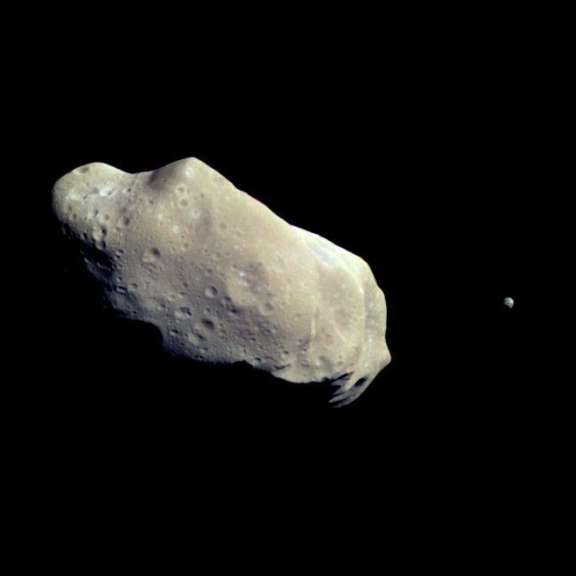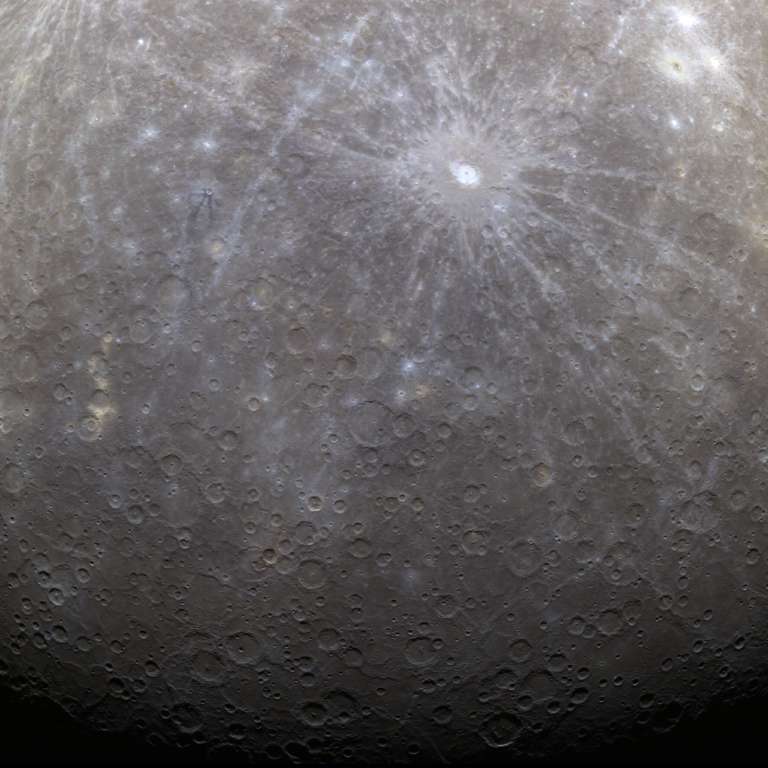All
All
Stories, updates, insights, and original analysis from The Planetary Society.
The scale of our solar system
Space.com has taken advantage of the infinitely scrollable nature of Web pages to produce a really cool infographic on the scales of orbital distances in the solar system.
Place names on Lutetia
Whenever we explore someplace new -- a new island, a new continent, a new cave, a new world -- there's a necessary activity that explorers must perform before they can sensibly tell the world about their discoveries: name things.
Pluto's atmosphere changes really fast!
Pluto's atmosphere has been a subject of fascination for planetary astronomers since -- well, since astronomers first discovered that it had an atmosphere in the early '90s. The interest is partly because it's fascinating that such a distant and cold world is capable of supporting an atmosphere, and partly because the presence of the atmosphere confounds all attempts to measure Pluto's size precisely.
So far, no moons found at Ceres or Vesta
Since the Galileo mission discovered tiny Dactyl circling Ida in 1993, quite a lot of asteroid systems have been found to be binary; there are even a few triples. So it's quite reasonable to guess that two of the biggest asteroids, Ceres and Vesta, might also have satellites.
Welcome to Carnival of Space #191
Welcome, everyone, to the Planetary Society Blog for the 191st Carnival of Space! Every week, a different webmaster or blogger hosts the Carnival, showcasing articles written on the topic of space.
In honor of Stardust: The Annefrank encounter
Since Stardust is being decommissioned today I thought it'd be fitting to take a look back at one of its data sets. I hadn't fiddled with the Annefrank data set before, and it was small and easy to deal with.
Dawn's instruments are being roused for Vesta approach
Today the Dawn imaging team released a photo from the main camera, the Framing Camera, symbolizing that they're preparing to start Dawn approach science; the other two science instruments, a spectrometer and a neutron detector, are also being turned on and checked out.
LPSC 2011: Analysis of the grains returned by Hayabusa
I'd been despairing of finding a good source for a writeup of the presentations in the Hayabusa session at last week's Lunar and Planetary Science Conference, but am happy to report that I've finally found an excellent one.
LPSC 2011: Kirby Runyon on Mars, the Moon, Hartley 2, and Ganymede
Kirby Runyon, a second-year grad student at Temple University, offered to send me some writeups of selected presentations from last week's Lunar and Planetary Science Conference, and I enthusiastically agreed.
LPSC 2011: Day 3: Deep Impact at Hartley 2
Wednesday's sessions at the Lunar and Planetary Science Conference (LPSC) on the Deep Impact flyby of Hartley 2 were one of two that I was most looking forward to, the other being this morning's talks on Hayabusa's samples from Itokawa, about which I don't yet have any notes. I am again grateful to Franck Marchis and Andy Rivkin for sending me their notes on Hartley 2.
Dawn Journal: HAMO2; the destination glows bright
Deep in the asteroid belt, Dawn continues thrusting with its ion propulsion system. The spacecraft is making excellent progress in reshaping its orbit around the sun to match that of its destination, the unexplored world Vesta, with arrival now less than five months away.
LPSC 2011: Day 1: Small bodies
Here are some of the noteworthy items from the morning's session on
365 Days of Astronomy Podcast: Stardust at Tempel 1
Yesterday the 365 Days of Astronomy podcast aired my contribution, Stardust at Tempel 1: The First Second Trip to a Comet.
A Planetary Society Trifecta
A Planetary Society trifecta -- that's what Neil Tyson calls this episode of his StarTalk radio show broadcast this week. His guests include the Society's Vice President, Heidi Hammel, and its Executive Director, Bill Nye, (along with the Society's friend, Steve Squyres, Principal Investigator for the Mars Exploration Rovers).
Stardust update: last image taken today
According to the Stardust website, the spacecraft has continued taking navigational camera images of Tempel 1 since last Monday's flyby. But
A dog-bone-shaped asteroid's two moons: Kleopatra, Cleoselene, and Alexhelios
Asteroid (216) Kleopatra has been interesting to astronomers for a long time because its brightness is highly variable, but it seems to get more interesting every time somebody looks at it with a new instrument. This week a paper was published in Icarus revealed that it's 30 to 50% empty space.
Sounds of Stardust, and a cool morphed Tempel 1 video
Here's two more items from Tuesday's flyby of comet Tempel 1 by the Stardust spacecraft to add to my previous roundup of Tempel 1 data. The first represents data from a dust counting instrument, portrayed as sound, and the second is a terrific morph animation of the flyby produced by Daniel Macháček.
Some early scientific impressions of Stardust's Tempel 1 flyby
I've spent a day with the Stardust images from Tempel 1, and had a chat with co-investigator Jessica Sunshine, so here are a bunch of images with some preliminary scientific commentary.
Highlights from today's Stardust Tempel 1 press briefing
It was a very happy science team at this afternoon's press briefing following the Stardust encounter with Tempel 1.
Quick-and-dirty animation of Stardust Tempel 1 images through closest approach
Here's a quick-and-dirty animated GIF of the 39 images of Tempel 1 that have arrived on Earth so far from Stardust. I've put a big watermark on this animation because it's not a final product.


 Explore Worlds
Explore Worlds Find Life
Find Life Defend Earth
Defend Earth


 Sun
Sun Mercury
Mercury Venus
Venus Earth
Earth Mars
Mars Jupiter
Jupiter Saturn
Saturn Uranus
Uranus Neptune
Neptune Small Bodies
Small Bodies

















